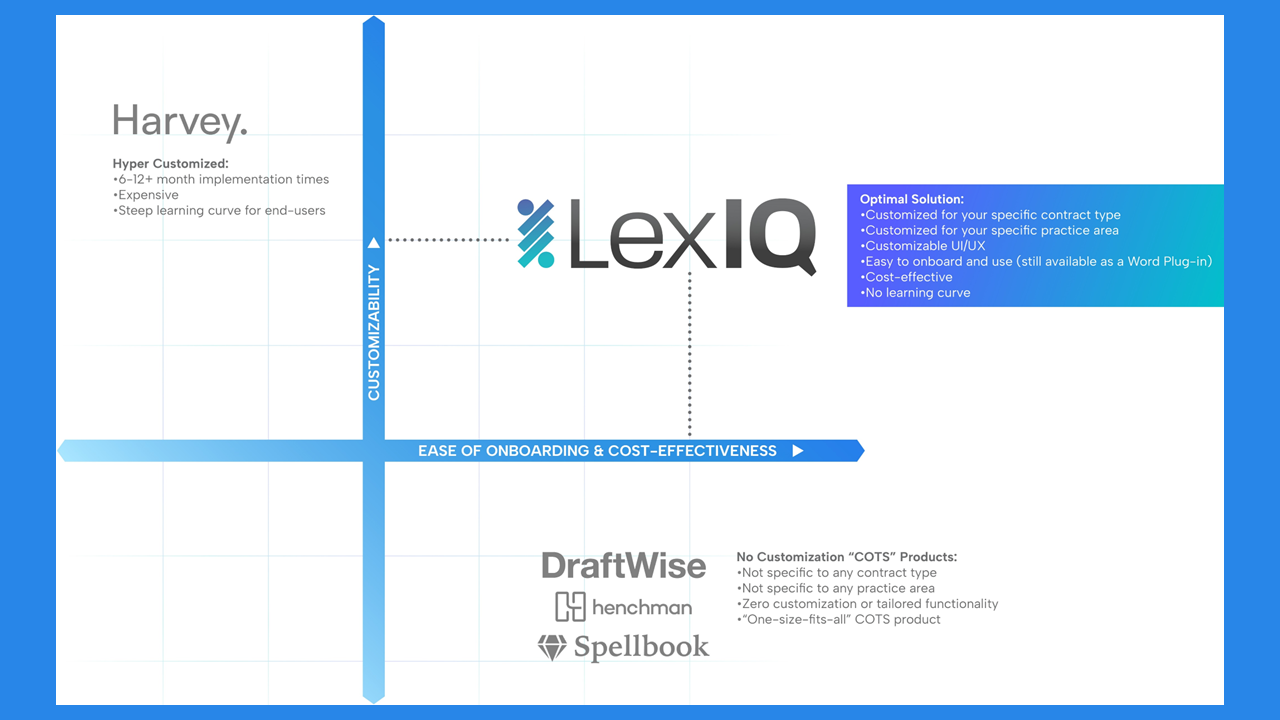LexIQ, an early-stage startup focused on using artificial intelligence to draft and review contracts in Microsoft Word, is today launching its waitlist for corporate legal departments and law firms interested in joining is beta program.
Founded by Samarth Gupta, a computer engineer and data scientist who most recently worked at EY as a senior data and analytics strategy consultant, and Triet Leminh, a lawyer and investment manager, LexIQ seeks to differentiate itself from other contract drafting products on the market by addressing a middle ground between off-the-shelf products with no customization options and highly customizable products that are expensive and require long implementation times.
At that “no customization” end of the spectrum, Gupta puts products such as Spellbook, Henchman (recently acquired by LexisNexis) and DraftWise, which he says are not specific to any contract type or practice area. At the “hyper customization” end, he puts Harvey, the AI product backed by OpenAI that has, until now, focused on a high degree of customization (although that may soon change).
LexIQ provides a level of customization that falls between those extremes, Gupta told me, enabling customization for specific contract types and practice areas. And because it works as a Word plug-in, it is easy to use and onboard, with no learning curve, and cost-effective.
Not One Size Fits All
“If you think about solutions like Spellbook or Henchmen or DraftWise, these are COTS products, right — commercial, off the shelf solutions — that are not specific typically to any contract type or to any practice area,” Gupta said. “They’re kind of like a one-size-fits-all solution.
“We’ve heard this across the board from many lawyers, from many law firms, that a one-size-fits-all solution is not good enough. It gets you 70% to 80% of the way there, but that remaining 20% is so essential and so valuable that, without it, the solution is almost useless.”
At the other end of the spectrum are vendors such as Harvey that offer “hyper-customization.” But that can entail six to 12 months of implementation time, and all that customization makes them expensive and difficult to learn, Gupta said.
“Obviously, that is unattainable for most corporate legal departments.”
Operating as a plug in within Word, the software’s capabilities include drafting and chatbot features for redlining drafts, determining what terms are market or not, and drafting new clauses within the context of a current agreement.
The company plans to build integrations with document management systems such as iManage and Google Workspace.
Expanding Its Waitlist
LexIQ is currently one of 24 startups participating in the Techstars Oakland accelerator program, backed by J.P. Morgan. The program offers mentorship, resources, and preseed financing of $120,000.
While the company has already been working with some corporate legal and law firm beta customers, with today’s announcement, it is seeking to build out the waitlist and identify additional qualified participants.
At this stage, Gupta is primarily looking for participation by mid- to large-sized corporate legal departments that work with commercial contracts such as master services agreements, software-as-a-service agreements, non-disclosure agreements, and the like.
“We’ve heard from a lot of them, right, and they’ve actually tried or run pilots with the likes of Spellbook, Henchman and DraftWise, but they’re just not customized to their needs,” Gupta said. “And so that’s where we’re coming in and helping them go that last mile, that last 20%, so that the tool is customized to their needs.”
With regard to the AI underlying the product, Gupta said that it is LLM agnostic. Clients can choose the model they want, based on their budget and desired levels of accuracy, and plug it into LexIQ’s architecture.
LexIQ has done initial fine tuning of the AI on commercial contracts and will then do further fine tuning and customization on a client-by-client basis.
Gupta was inspired to start LexIQ by his work as a consultant at EY on a major project involving a public healthcare agency. To obtain data necessary to the project, he had to work with multiple law firms and in-house attorneys to negotiate data-sharing agreements. When he saw how long it was taking to negotiate those agreements and the cost to the taxpayer, “it made me mad, to be completely candid.”
That was around the time that generative AI was gaining traction. “I’m a data scientist by trade, so I put two and two together, conceived of this idea, and that’s when I left EY and started this.”
 Robert Ambrogi Blog
Robert Ambrogi Blog